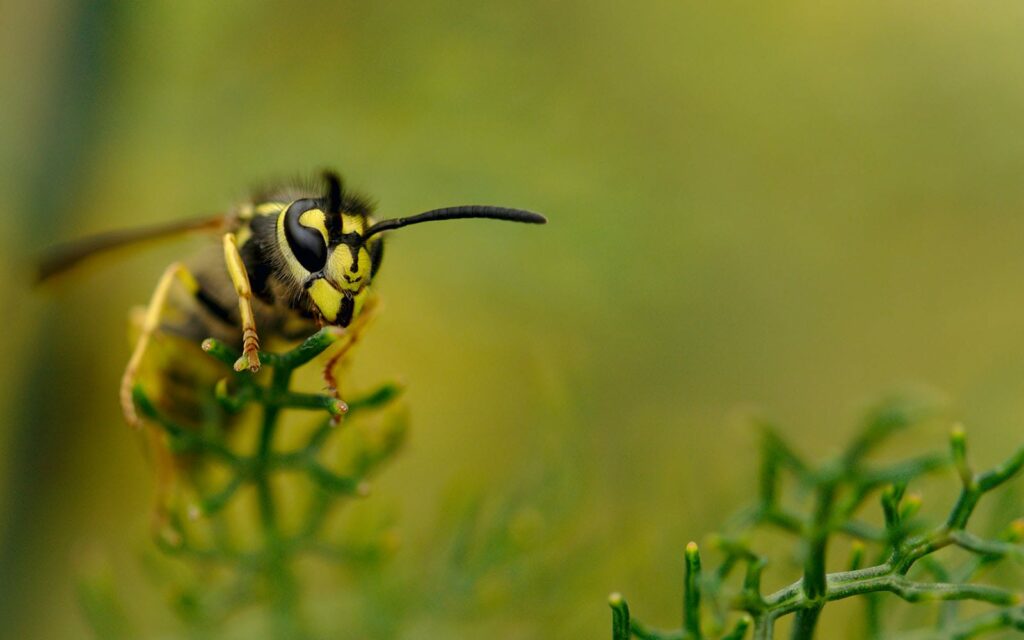
Contents
Encountering one wasp during the summer in Michigan means that there are more nearby. Ideally, you won’t want any in or around your house for the threat of being stung, so finding and removing a wasp nest becomes a top priority to keeping your family safe.
Wasps are most active in July, but their active season will range from June until the late fall. In the spring, wasps will look for a good place to build their nests, lay their eggs, and produce the workers. That population growth spikes in July, when colonies have likely produced hundreds of workers. The duty of the worker is to hunt for food and return it to the nest.
Later in the summer, their activity will make a change. Instead of producing workers, the queen will produce one final brood of wasps for reproduction instead. Those kings and queens will venture out to build new nests, to begin the cycle over again.
Without the need to feed larvae back at the nest, the worker wasps will increase their range. During this time you might spot wasps more, since they are taking a bigger risk to find more sugary foods.
In Michigan, you are likely to come across two subfamilies of wasps: the yellow jacket and the paper wasp. The yellow jacket has the appearance that you might associate with wasps, with its yellow and black head and patterned abdomen.
Yellow jackets are social insects, living in a colony that can consist of up to 4,000 workers. They are very territorial, therefore cause a significant threat to humans. When agitated, the yellow jacket can repeatedly sting and cause an allergic reaction. This is not an uncommon occurrence, and they send nearly half a million people to the emergency room each year because of a yellow jacket’s sting.
Differing from the yellow jacket, the paper wasp has a different appearance and a differing demeanor. Paper wasps have a similar body shape, but they are mostly brown with some yellow coloration.
Paper wasps are not naturally aggressive, but they can sting if we threaten their nest. The sting of the paper wasp can also be painful and cause allergic reactions. After being stung, you can expect the area to become red and swollen, but you can alleviate some irritation by washing the area with soap and water. An antihistamine or hydrocortisone ointment can also calm the reaction from a sting.
Wasps will typically build nests into existing crevices or other hiding spaces, such as a covered and secluded location. When they nest around your home, the common areas include under your roof, under a deck or porch, or in the rafters. If you see wasp activity, search these common areas to see if the nest is in or around your house.
Attempting to remove a wasp nest can be dangerous, because when the wasps feel threatened, they will sting you to protect your home. To help keep you and your family safe from wasps, contact a pest control specialist, such as the professionals at Van Den Berge Pest Control at 616-392-7367.
Trust the locally owned, widely renowned experts at Van Den Berge Pest Control for all of your pest needs. With over 100 years of combined experience throughout the Holland, MI-based pest control team, you know you’re in expert hands with our state-certified experts.
Recent Posts
5 Tips for Evaluating Termite Treatment Costs
When it comes to evaluating termite treatment costs, you need a strategic approach. Understanding the
Comparing Termite Treatment Costs: A How-To Guide
When you’re faced with a termite infestation, understanding treatment costs is vital for effective management.
Understanding Exterminator Costs for Mosquito Control
Imagine you own a large backyard and decide to hire a mosquito exterminator. You might
